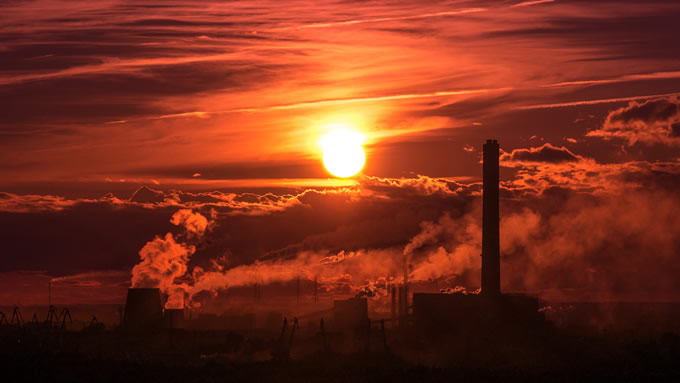Re-Using Waste Heat for Reducing Residential Energy

Rapid urbanization and industrialization over the last century have resulted in an unprecedented demand for energy. Fossil fuels — especially oil, coal and gas — are used at an alarming rate, accounting for 72% of the global energy demand in 2017. That same year, energy consumption grew by 2.3% worldwide, nearly double the average rate since 2010.
But, what many people don't know is that there is a better energy alternative — waste heat. By utilizing waste heat recovery systems, humans can reduce their carbon footprint, improve efficiency and create a sustainable future.
What is Waste Heat?
Simply, waste heat is heat that is produced by a machine or an energy output process, as a byproduct of doing work. According to the laws of thermodynamics, all such processes give off some waste heat.
Sources may include organisms, human activities and natural systems. In a residential setting, this might be refrigerators, incandescent light bulbs, air conditioning units, ventilation systems or electronic devices. The largest sources of waste hear are power stations, industrial plants and vehicle engines.
Often, as in the case of ventilation, a heat engine produces the energy needed to function. These engines run on high temperatures and are never perfectly efficient, according to the second law of thermodynamics. Therefore, a heat engine will always produce lower-temperature heat as a byproduct. This heat is referred to as secondary heat or waste heat, which is typically released into the surrounding atmosphere.
Depending on the size and temperature of the energy source, this waste heat can result in a hotter environment. For instance, the heat and carbon released by power plants contribute to the global warming crisis. And, on a smaller scale, your oven releases waste heat into your home, creating a warmer environment.
Why Should You Re-Use It?
However, the problem with waste heat isn't so much that it heats the atmosphere — waste heat only accounts for 1% of climate change. Rather, the issue is one of wastage. If the energy is there, people should use it. And the energy is most certainly there. Humans create an immense amount of heat every day, but only re-use 30% of it. That means there's still much more for humans to take advantage of.
Re-using this waste heat has many benefits, one being it reduces the extraction and use of fossil fuels, which are non-renewable. At the current rate of consumption, the earth only has 53 more years of oil reserves left. Other fossil fuels, like gas and coal, will also run out by 2060 and 2090 respectively. So, if humans plan to last another century, they must begin utilizing waste heat as an alternative energy source.
Additionally, waste heat has the potential to save homeowners money by reducing their energy consumption. When properly applied, waste heat energy recovery can reduce the thermal energy used to heat water by 50% and, if accompanied by a solar thermal water heating system, can reduce energy usage by 90%. So, while the application of residential recovery may require planning, the process offers a substantial return on investment.
Recovering Waste Heat Energy
Many power plants and industrial operations are already applying waste heat recovery to their operational processes. Most fossil-fueled plants in the United States are 33% efficient, while combined heat and power plants typically achieve 60 to 80% efficiency. Some systems are even approaching 90% efficiency. Likewise, residential waste heat recovery systems have gained popularity in recent years for their ability to improve energy efficiency and lower costs.
There are multiple ways to recover waste heat and repurpose it within your home. One way is to install a ground source heating pump. GSHPs are extremely efficient at heating and cooling your home and many possess water heating capabilities as well. These systems work by extracting heat from your home in the summer and redirecting it to heat your water for free. And, in the winter, they still work to heat your water supply as efficiently as possible.
Another application for waste heat is cooling. Air conditioners and fans account for 10% of global energy consumption and can actually heat the air in urban areas by nearly two degrees Fahrenheit. Absorption coolers, however, would reduce this consumption by using the energy from heat to condense refrigerants. Thus, they rely on waste heat rather than electricity to cool your home. Although mainly used in industrial or commercial settings, these coolers are available for large residential homes. Absorption coolers conducive to use in smaller homes are currently under development.
Wifi temperature sensors are another, more affordable option for those aiming to reduce their energy consumption. These sensors allow you to monitor and regulate temperature and humidity within your home.
By transmitting reading to a cloud or mobile application, the sensor allows you to remotely screen the ambient conditions of your home. So, if conditions fall below ideal, you can react in a timely manner and take preventative measures to conserve energy and save money.
The Future of Waste Heat Recovery
Waste heat energy recovery holds one of the greatest potentials in reducing energy consumption and promoting conservation. As the earth's supply of fossil fuels diminishes, heat energy will become an even more valuable commodity that society cannot afford to misuse. The future of recovery systems is bright since they offer a reliable, more sustainable alternative.
And, as industry leaders shift their focus to sustainable development and decarbonization, the demand for waste heat recovery will increase. Moreover, government policies, regulations and incentives will continue to encourage the reduction of CO2 emissions and support industry growth.
Comments (0)
This post does not have any comments. Be the first to leave a comment below.
Featured Product

